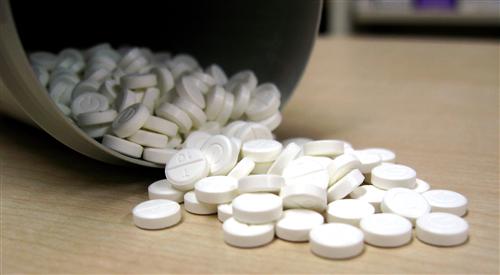-
Opioid addiction and heroin use
 Statistics of opioid abuse (prescription and non-prescription) have been climbing at alarming rates across Bucks County, the Philadelphia region and the nation. This includes a dramatic increase in the improper use of painkillers such as morphine, codeine, oxycodone, methadone and Vicodin.This epidemic cuts across all income levels, neighborhoods, races and family situations like no other drug abuse epidemic in recent history.From the Centers for Disease Control:Opioid Abuse
Statistics of opioid abuse (prescription and non-prescription) have been climbing at alarming rates across Bucks County, the Philadelphia region and the nation. This includes a dramatic increase in the improper use of painkillers such as morphine, codeine, oxycodone, methadone and Vicodin.This epidemic cuts across all income levels, neighborhoods, races and family situations like no other drug abuse epidemic in recent history.From the Centers for Disease Control:Opioid AbuseMore people died from drug overdoses in 2014 than in any year on record. The majority of drug overdose deaths (more than six out of ten) involve an opioid. And since 1999, the number of overdose deaths involving opioids (including prescription opioid pain relievers and heroin) nearly quadrupled. From 2000 to 2014 nearly half a million people died from drug overdoses. 78 Americans die every day from an opioid overdose.
We now know that overdoses from prescription opioid pain relievers are a driving factor in the 15-year increase in opioid overdose deaths. Since 1999, the amount of prescription opioids sold in the U.S. nearly quadrupled, yet there has not been an overall change in the amount of pain that Americans report. Deaths from prescription opioids—drugs like oxycodone, hydrocodone, and methadone—have also quadrupled since 1999.
This epidemic affects adolescents as young as 12 years old. According to the American Society of Addiction Medicine,
- In 2014, 467,000 adolescents were current nonmedical users of pain reliever, with 168,000 having an addiction to prescription pain relievers.
- In 2014, an estimated 28,000 adolescents had used heroin in the past year, and an estimated 16,000 were current heroin users. Additionally, an estimated 18,000 adolescents had heroin a heroin use disorder in 2014.
- People often share their unused pain relievers, unaware of the dangers of non-medical opioid use. Most adolescents who misuse prescription pain relievers are given them for free by a friend or relative.
- The prescribing rates for prescription opioids among adolescents and young adults nearly doubled from 1994 to 2007.
Heroin AbuseFrom 2002–2013, past month heroin use, past year heroin use, and heroin addiction have all increased among 18-25 year olds. The number of people who started to use heroin in the past year is also trending up. Among new heroin users, approximately three out of four report abusing prescription opioids prior to using heroin. The increased availability, lower price, and increased purity of heroin in the US have been identified as possible contributors to rising rates of heroin use. According to data from the DEA, the amount of heroin seized each year at the southwest border of the United States was approximately 500 kg during 2000–2008. This amount quadrupled to 2,196 kg in 2013.
Heroin-related deaths more than tripled between 2010 and 2014, with 10,574 heroin deaths in 2014. The largest increase in overdose deaths from 2013 to 2014 was for those involving synthetic opioids (other than methadone), which rose from 3,105 deaths in 2013 to 5,544 deaths in 2014. One of these synthetic opioids, illegally-made fentanyl, drove the increase.1 It was often mixed with heroin and/or cocaine as a combination product—with or without the user’s knowledge.
Resources
- GetSmartAboutDrugs.Gov: Extensive information, resources, videos and more for parents, educators and caregivers on drug abuse prevention and treatment
- Teen alcohol and drug abuse FAQ from Bucks County Network of Care
- PAStop.org: Commonwealth Prevention Alliance Campaign to Stop Opiate Abuse
- Bucks County Drug & Alcohol Commission (see Narcan information below)
- Council of Southeast Pennsylvania, Inc: Prevention, intervention and addiction recovery solutions
- Find a treatment center : www.addiction.com
Narcan (naloxone)Narcan™ (naloxone) is an opiate antidote. Opioids include heroin and prescription pain pills like morphine, codeine, oxycodone, methadone and Vicodin. When a person is overdosing on an opioid, breathing can slow down or stop and it can very hard to wake them from this state. Narcan™ (naloxone) is a prescription medicine that blocks the effects of opioids and reverses an overdose. It cannot be used to get a person high. If given to a person who has not taken opioids, it will not have any effect on him or her, since there is no opioid overdose to reverse.Narcan is currently being distributed to police, EMT's, schools, and other sites throughout the community along with training to help prevent overdose deaths. Narcan is administered through the nasal passages. The Bucks County Drug and Alcohol Council (BCDAC) is offering free doses of Narcan and training on how and when to administer it as long as supplies last (as of December 12, 2016) at their Warminster office.For information about how to take advantage of this valuable program, please click here.
24-hour intervention, information, and recovery support line from theCouncil of Southeast Pennsylvania, Inc.1-800-221-6333
Bucks County Drug & Alcohol Commission: 215-773-9313

